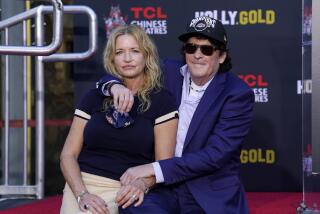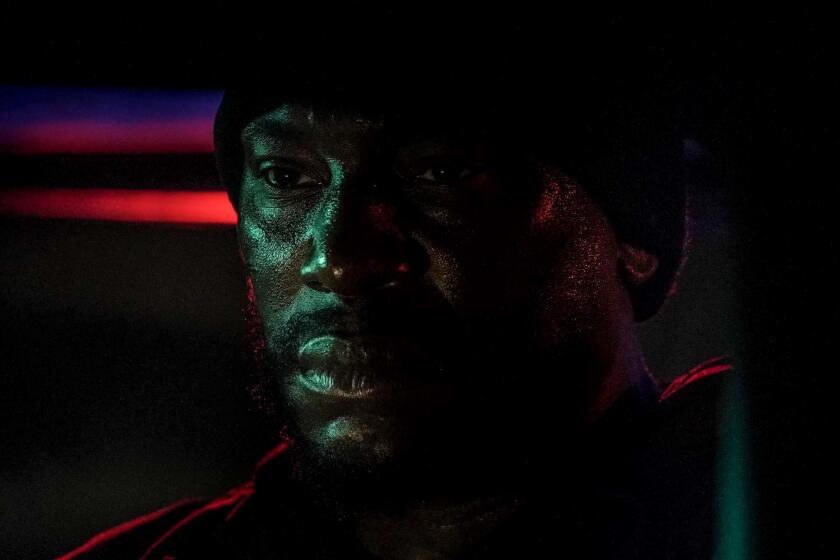Notes on the Year: They <i>really</i> suffered for their art
All actors, in some way, suffer for their craft, with the very act of losing oneself inside another being coming at a high price. All that pushing and prodding of one’s pain, joy, love, loss and failure required by the craft is invasive by nature, demanding exposure that few of us would willingly suffer.
But there are those roles where the physical extremes parallel, or outpace, the emotional ones; where art is found in extraordinary action, an “our body, ourselves” melding of the abstract of emotions with the concrete of bone and sinew. In that, 2010 emerged as one of the most grueling in recent memory — bodies drenched in sweat, ribs cracked, pounds lost, pounds gained, muscle memory stretched to the limits. The year has turned acting into an extreme sport for some stars, an extreme pleasure for spectators.
Natalie Portman, Christian Bale, James Franco, Mark Wahlberg, Édgar Ramirez and Colin Firth have been among the prime practitioners, with the fascination in what they have accomplished coming not so much in the illusion, but the lack of it. Of course, the wires and mirrors are there, but some things even the best Hollywood magic can’t cheat.
Does seeing the sacrifice on-screen change the way in which we evaluate a performance? It can’t but help to. The medium itself is rooted in relatability, and while beauty is not so malleable (plastic surgery, notwithstanding), the body proper is. That it resonates so deeply now speaks as much to our own needs as to their skills. Surrounded by images of life played out 24/7 on screens large and small, we’ve become a culture of observers. Yet there is that nagging desire for more, to reconnect with the animalistic, essential part of ourselves, to actually feel the burn.
There is some satisfaction too in knowing that even for them it doesn’t come easy. Portman, who studied ballet as a child, spent nearly a year at the barre working on her pliés and pirouettes before filming Darren Aronofsky’s “Black Swan.” When the bones of her toes crack, it does not feel a lie, the effort of the stunning spins visible in her contracting muscles.
Wahlberg built a boxing ring at his home four years ago and used the intervening years before “The Fighter” began shooting to be pummeled and pounded so that he’d be ready to take and throw punches like a pro. When they come, the punches, unrelenting and with brutal force, you can feel the impact. The requirements for Bale, who plays Wahlberg’s brother in the David O. Russell film, were different and distinct as well from those for 2004’s “The Machinist,” where he lost a frightening 60-plus pounds. For “The Fighter” was a shape-shifting balancing act that saw the actor drop enough body fat to mirror the twitchy gauntness of a crack addict and yet work his muscle into steely ropes that could survive the ring.
Ramirez, who played the international terrorist at the center of “Carlos,” needed to expand rather than shrink. The shoot for the epic film by Olivier Assayas was a demanding nine months to begin with, but the Venezuelan actor took roughly a month off to gain the 35 pounds he felt necessary to capture Carlos’ increasing dissipation and inflating ego. There is a heaviness that saturates the man and his movements in those moments that would otherwise have been impossible.
For Franco, it was spending hours on his toes, quite literally, as director Danny Boyle filmed his actor nearly immobilized by a boulder that has the character’s right arm crushed against a canyon wall. The rest of his body was engaged in an exquisite dance of life in such a tight space, the ebb and flow of energy made visible in every limb.
Firth, on the other hand, was faced with the torturous tongue-twisting of a stutterer and channeling all the subtle physical tics that tie up the body as a result. It required him, in a sense, to overcome all that he does so well. That facility with language totally subverted; the tension of mind at war with body played out in the chords of his neck; hesitation becoming a silent scream.
Certainly, the physical alone was not enough to make these performances exceptional — it is the special alchemy of emotion and physicality which these actors have created that is extraordinary.
More to Read
Only good movies
Get the Indie Focus newsletter, Mark Olsen's weekly guide to the world of cinema.
You may occasionally receive promotional content from the Los Angeles Times.










